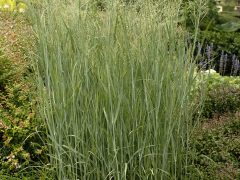
‘Heavy Metal’ blue switchgrass
Panicum virgatum 'Heavy Metal'
Metalic blue leaves, strictly upright. Never leans or flops, even in heavy rain. Pink tones … Continued
Drought-tolerant and drought-resistant plants may still need supplemental water from time to time, but they can survive periods of dryness without dying.
Drought-resistant plants like cactus, hens and chicks, and sedums can go for very long periods without water and do not tolerate poorly drained locations. Drought-resistant tropical plants grown indoors in winter like cactus, Sansevieria, Echeveria, and other succulents sometimes fail due to overwatering.
Drought-tolerant plants grow in many textures and sizes and have different adaptations that help them get through periods of drought:
The latter two types of plants are drought tolerant once established because any new planting, regardless of drought tolerance, needs to be watered during the first growing season to allow roots to reach the depths needed to access moisture during dry periods.
It’s also important to note that survival may not mean that the plant will look its best during this time. Watering weekly for a longer period of time will result in the best-looking gardens with the highest tolerance for drought. During the hottest, dryest times in summer, watering deeply twice a week is recommended. These less frequent waterings will encourage root systems to expand, making it easier for plants to access moisture when their environment is dry.
Winter drought has become a bigger problem in recent years as snowfall declines. Evergreen plants are especially vulnerable during winter drought because their foliage continues to shed moisture while dormant deciduous plants have shed their leaves and can conserve moisture in woody stems and underground. Watering shrubs and trees in winter on days when the temperature allows (above freezing) will help ensure their healthy return in spring.
Here are some drought-tolerant and drought-resistant plants to grow—

Panicum virgatum 'Heavy Metal'
Metalic blue leaves, strictly upright. Never leans or flops, even in heavy rain. Pink tones … Continued
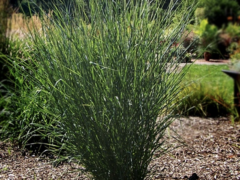
Panicum virgatum 'Cloud Nine'
This clump-forming, warm-season grass typically grows to 3′ tall. When in flower, flower panicles may … Continued
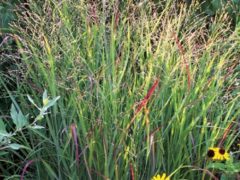
Panicum virgatum ‘Shenandoah’
Best burgundy-red coloring of all the switch grasses. Deep-green foliage takes on red hues by … Continued
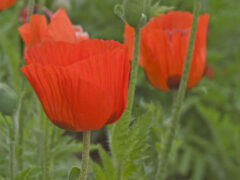
Papaver orientale ‘Prince of Orange’
Huge tangerine-colored blossoms open on wiry stems from late spring thru early summer. Petals have … Continued
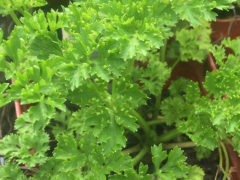
Petroselinum crispum/Petroselinum crispum var. neapolitanum
High in Vitamins A and C, and iron. In addition to having a distinctive fresh … Continued
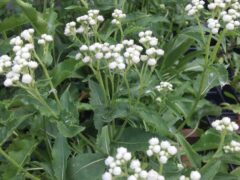
Parthenium integrifolium
This heat-loving native blooms June through September and prefers a sunny location. White flower clusters … Continued
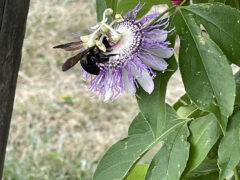
Passiflora incarnata
This perennial vine grows up to 25′ long and climbs with tendrils. 3″ lavender flowers … Continued
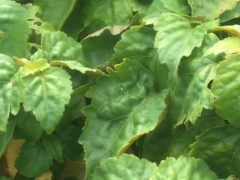
Pogostemon patchouli
Grown in the United States at least since 1900, patchouli, is part of a genus … Continued
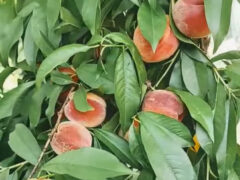
Prunus persica
Peaches are self-fertile but cross-pollinating with two or more trees will increase production. Peach trees … Continued
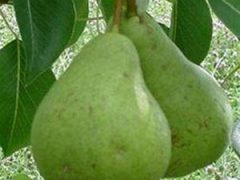
Pyrus communis/Pyrus pyrifolia
Our pear trees are semi-dwarf, growing to 15’ high and wide. Plant pear trees in … Continued
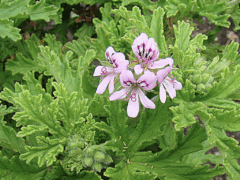
Pelargonium hybrids
Grown primarily for their distinctively scented foliage, scented geraniums also have beautiful delicate blooms in … Continued
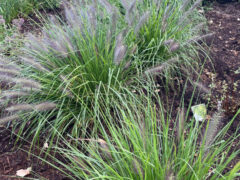
Pennisetum alopecuriodes 'Red Head'
One of the earliest-flowering fountain grasses, ‘Red Head’ produces showy bottlebrush plumes that emerge burgundy … Continued